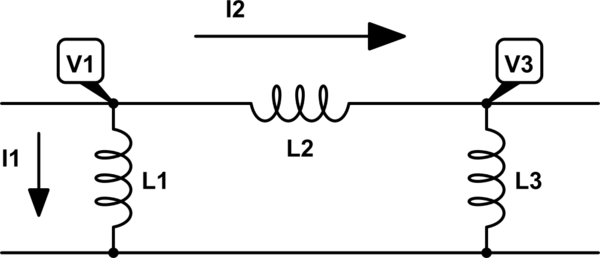Consider this circuit:

simulate this circuit – Schematic created using CircuitLab
(this part is preceeded and followed by other components).
$$I_1 + I_2 = \displaystyle \frac{V_1}{sL_{12}} - \frac{V_3}{sL_{12}} \left( \displaystyle \frac{L_1}{L_1 + L_2} \right)$$
with
$$L_{12} = L_1 || L_2 = \displaystyle \frac{L_1 L_2}{L_1 + L_2}$$
How can this relation be obtained? Any hint?
The ratio \$ \displaystyle \frac{L_1}{L_1 + L_2} \$ seems a voltage divider; but I can't see anything similar. Moreover, \$ L_1 \$ and \$ L_2 \$ are not parallel.
